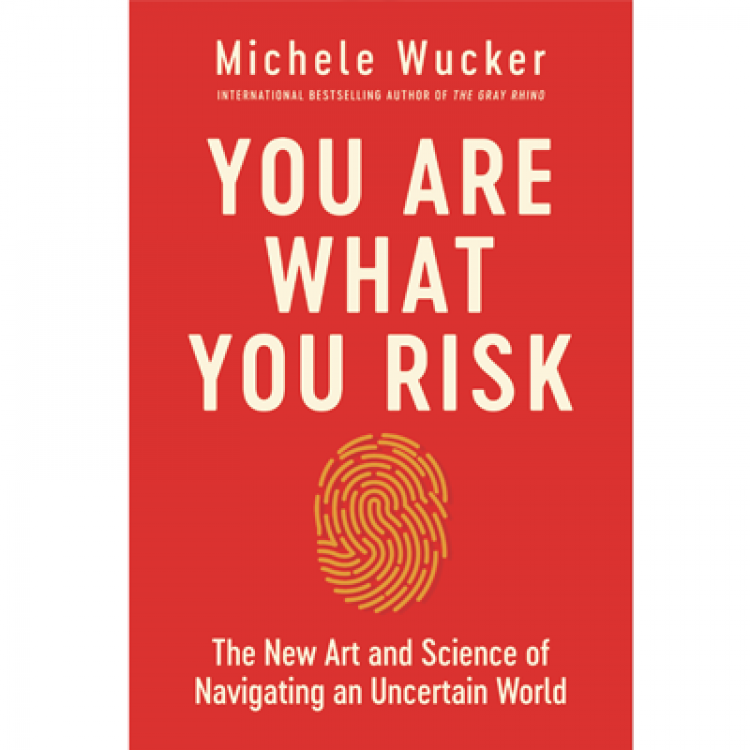Interview with best-selling author Michele Wucker

Michele Wucker, author of The Gray Rhino, spoke at Airmic’s fastTrack Forum on 8 July, talking about her new book, You Are What You Risk. She spoke to Airmic News before the event.
The way people perceive risk permeates everything Michele Wucker writes. It’s not so much the risks themselves, it’s the way we as humans respond to them and what drives our decision making in our daily lives.
Wucker sees understanding these differences in risk perception and decision-making as crucial to questions going on at governmental level and societally in 2021 about Covid-19 and the global vaccination rollout.
Her new book, You Are What You Risk: The New Art and Science of Navigating an Uncertain World, was released on 6 May, and follows the 2016 bestseller The Gray Rhino: How to Recognize and Act On the Obvious Dangers We Ignore.
Wucker spoke at Airmic’s fastTrack Forum, ‘Becoming Future Fit’, a live streamed event, on 8 July, joining Airmic’s CEO, Julia Graham, for a fireside chat to discuss her new book.
Wucker’s first book focused on dealing promptly with sometimes obvious, impactful and probable risks, that despite “coming straight towards you” are all too likely to remain ignored and unaddressed.
Though it builds on The Gray Rhino, her new book takes a more cultural and psychological focus. It asks why we make the risk decisions we make, and on an individual’s unique “risk fingerprint” to such decisions, and “risk empathy” to understand others’ ways of thinking about risk.
“The risk choices you make identify you to the world as clearly as a fingerprint on a glass at a crime scene. By understanding the composition of your risk fingerprint you can gain a better understanding of yourself, your culture or your organisation, and begin to optimise your own risk taking,” says Wucker.
“Your risk fingerprint is composed of a mix of innate genetic influences and personality, as well as your upbringing and the shocks and experiences you’ve faced along the way, like callouses from manual labour, or a scar from cutting your finger,” she tells Airmic News.
By understanding your risk fingerprint you can develop new habits and behaviours and a healthier relationship with risk taking –both your own and that of others, she explains.
“Paying attention to the risk fingerprints of other people around you can help you to develop risk empathy: that is, understanding why those around you take or avoid certain risks and using that knowledge to help them to be more comfortable pursuing opportunities or to step back from a ledge if they’re about to take a bad risk decision,” Wucker adds.
Was the Coronavirus pandemic a Gray Rhino and should we have seen it coming? Yes, she thinks, in some of its many stages. Experiences with other epidemics, such as SARS, Swine Flu and Ebola, should have been fire drills.
“The people who fell down on the job were the policymakers. For the normal person on the street, it’s not their responsibility, but for some people it’s their job,” says Wucker. “There were regular scenario planning exercises, and we had warnings from the World Health Organization and other public health and policy authorities about the lack of preparedness, and even Bill Gates’s Ted talk in 2015. The alarm bells were there.”
At the same time, once individuals knew of the risk, we shared in the responsibility for facing down the pandemic gray rhino, but people’s behaviours varied widely. Now that the focus has turned to vaccinations – and issues of vaccine hesitancy – the “risk fingerprint” focus of her new book has particular resonance for decision-makers, managers and policymakers dealing with, in some cases, a sceptical public.
When it comes to encouraging wearing masks or social distancing within a workplace, knowing a person’s age group, family circumstances, cultural or religious background, and other factors, can inform how to better engage them in managing risk, she explains.
“It starts out with taking the risk temperature of the people on your team and of the organisation’s culture,” she says. “Attitudes and the reasons behind them will be different for each person, so you should recognise that some of your team members might need different incentives or a different approach. Their own unique attitudes and relationship with risk might also make some of them more suited for certain tasks rather than for others.”
While people have different risk type personalities, there is no “ideal” type, she stresses. The important thing is to be aware of your type and what you can do to build on your strengths and compensate for your weaknesses. Some people enjoy picking from a huge menu, she notes, while others prefer a more limited set of options. Each of those set of preferences has its place.
“There are certainly some people who do a better job of optimising what they do in life to their risk type,” she says. “People tend to cluster in certain careers, for example, and you can see that in certain jobs in particular such as in the legal profession or air traffic control.”
Some self-reflection is necessary in any risk management conversation, she emphasises, to be aware of one’s own risk fingerprint and the biases it inevitably brings. “You will bring prejudices to whatever thought process and judgements you make. It’s vital to stay aware of them,” she adds.
